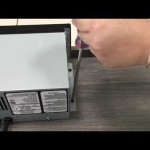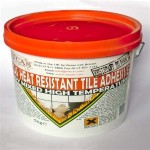The Significance of a Fireplace Chimney Cleaning Brush
Maintaining a fireplace chimney is crucial for ensuring the safe and efficient operation of a fireplace. Creosote, soot, and debris accumulate within the chimney over time, posing both fire hazards and potential health risks. A fireplace chimney cleaning brush serves as a primary tool for removing these hazardous materials, contributing significantly to overall home safety and system performance.
A properly cleaned chimney allows for unimpeded airflow, ensuring that smoke and combustion byproducts are effectively exhausted from the home. This prevents dangerous backdrafts, which can introduce carbon monoxide and other harmful gases into living spaces. Regular cleaning also minimizes the risk of chimney fires, which can spread rapidly and cause extensive property damage.
Furthermore, the use of a fireplace chimney cleaning brush is not just about safety; it also impacts the efficiency of the fireplace. A clean chimney allows for better draft, resulting in a more efficient burn and increased heat output. This can translate to lower heating costs and a more comfortable living environment.
Key Point 1: Understanding the Different Types of Fireplace Chimney Cleaning Brushes
Selecting the right fireplace chimney cleaning brush is paramount for effective cleaning. Brushes vary in material, shape, and size, each designed for specific chimney types and cleaning needs. Understanding these differences ensures the proper tool is employed for the task.
Wire Brushes: These brushes are primarily used for cleaning masonry chimneys, which are constructed of brick or stone. They feature stiff wire bristles that effectively remove creosote and soot from the rough surfaces of the chimney liner. Wire brushes are durable and can withstand the harsh conditions within a chimney. The type of wire used is also important, with some brushes utilizing tempered steel for increased lifespan and resistance to bending or breaking.
Poly Brushes: Poly brushes, made from durable plastic bristles, are generally preferred for cleaning metal chimney liners, such as those found in prefabricated fireplaces or wood stoves. The softer bristles of poly brushes are less likely to scratch or damage the metal lining, preserving its integrity and preventing corrosion. These brushes are also suitable for cleaning stainless steel chimney liners, which require a gentler touch.
Round Brushes: Round brushes are designed for cleaning round chimney flues. They are available in both wire and poly options, depending on the chimney liner material. The circular shape allows for thorough cleaning of the entire flue surface.
Square or Rectangular Brushes: These brushes are specifically designed for cleaning square or rectangular chimney flues, often found in older homes. Their shape ensures complete coverage of the flue's corners and edges, effectively removing creosote and debris.
Sizing Considerations: Choosing the correct brush size is essential for effective cleaning. The brush should be slightly larger than the flue's diameter or dimensions. This ensures that the bristles make adequate contact with the flue walls, providing thorough cleaning. It is crucial to measure the flue accurately before selecting a brush.
Brush Rods: Fireplace chimney cleaning brushes are typically used in conjunction with flexible brush rods. These rods are connected to the brush and allow the user to extend the reach of the brush throughout the entire chimney flue. Rods are available in various materials, including fiberglass and polypropylene. The length of the rods should be sufficient to reach the top of the chimney from the fireplace opening or from the roof.
Key Point 2: Methods for Using a Fireplace Chimney Cleaning Brush
There are two primary methods for cleaning a chimney using a brush: the "bottom-up" method and the "top-down" method. Each method has its advantages and disadvantages, and the choice depends on factors such as chimney height, accessibility, and the user's comfort level.
Bottom-Up Method: This method involves inserting the brush into the chimney from the fireplace opening. Brush rods are added one at a time as the brush is pushed upward through the flue. This method can be advantageous when access to the roof is limited or undesirable. It allows the user to remain inside the home during the cleaning process. However, it can be physically demanding, requiring the user to push the brush and rods upward against gravity and the resistance of creosote buildup.
Top-Down Method: The top-down method involves accessing the chimney from the roof. The brush is attached to the rods and lowered into the chimney flue from the top. Rods are added as the brush is lowered further down the flue. This method can be easier physically, as gravity assists in the cleaning process. It also allows for better visibility of the cleaning progress. However, it requires safe access to the roof and can be more challenging in inclement weather conditions.
Safety Precautions: Regardless of the method chosen, it is crucial to wear appropriate safety gear, including eye protection, a dust mask, and gloves. These items protect against exposure to creosote, soot, and other debris that can be harmful to the eyes, respiratory system, and skin. It is also essential to protect the surrounding area from falling debris. Drop cloths or plastic sheeting can be used to cover the fireplace opening and the floor around the fireplace.
Cleaning Technique: When using the brush, apply consistent pressure and scrub the entire surface of the flue. Overlapping strokes ensure that all areas are thoroughly cleaned. Pay particular attention to areas with heavy creosote buildup. The brush should be moved up and down (or down and up) the flue multiple times to ensure effective cleaning. It may be necessary to disassemble the brush and rods periodically to remove accumulated debris.
Disposal of Debris: After cleaning, carefully remove the debris from the fireplace and chimney. Dispose of the debris in a sealed container, such as a metal bucket with a lid. Creosote is flammable and should be handled with care. It is recommended to dispose of the debris properly at a hazardous waste facility or according to local regulations.
Key Point 3: Maintenance and Inspection After Using a Fireplace Chimney Cleaning Brush
Following the cleaning process, a thorough inspection of the chimney is essential to identify any potential issues or damage that may require further attention. Additionally, proper maintenance of the cleaning brush will ensure its longevity and effectiveness for future use.
Chimney Inspection: After cleaning, examine the chimney flue for any cracks, gaps, or other signs of damage. Use a flashlight to illuminate the flue and carefully inspect the entire surface. Pay close attention to the joints between flue tiles or bricks, as these are common areas for deterioration. If any damage is detected, it is important to consult with a qualified chimney professional for repair or replacement. Neglecting chimney damage can lead to serious safety hazards, including chimney fires and carbon monoxide leaks.
Smoke Test: A smoke test can be performed to verify that the chimney is drafting properly. This involves lighting a small fire in the fireplace and observing the smoke flow. The smoke should rise smoothly and efficiently through the chimney flue. If smoke is entering the room, it indicates a drafting problem that needs to be addressed. Potential causes of drafting problems include obstructions in the flue, leaks in the chimney, or negative pressure within the home.
Brush Maintenance: After each use, clean the fireplace chimney cleaning brush thoroughly. Remove any accumulated creosote, soot, or debris from the bristles. Use a wire brush or a stiff brush to scrub the bristles clean. If the brush is heavily soiled, it can be washed with soap and water. Rinse the brush thoroughly and allow it to dry completely before storing it.
Rod Inspection: Inspect the brush rods for any damage, such as cracks, bends, or broken connectors. Damaged rods should be replaced to ensure safe and effective cleaning. Store the rods in a dry place to prevent corrosion.
Proper Storage: Store the fireplace chimney cleaning brush and rods in a dry, secure location. Protect them from extreme temperatures and moisture. Proper storage will help to extend the lifespan of the brush and rods and prevent damage.
Professional Inspection: Even with regular cleaning and maintenance, it is recommended to have the chimney professionally inspected at least once a year. A qualified chimney sweep can identify potential problems that may not be visible to the homeowner. Professional inspections can help to ensure the safe and efficient operation of the fireplace and chimney system.
In conclusion, the fireplace chimney cleaning brush is a crucial tool for maintaining a safe and efficient fireplace. By understanding the different types of brushes, employing proper cleaning methods, and performing regular maintenance and inspections, homeowners can significantly reduce the risk of chimney fires and other hazards associated with creosote buildup.

Vevor Chimney Sweep Kit 33 Ft Brush With 10 Nylon Rods And 2 Head Rotary Cleaning Ycs10mjdpyst00001v0 The Home Depot

Vevor Chimney Sweep Kit 33 Ft Brush With 10 Nylon Rods And 2 Head Rotary Cleaning Ycs10mjdpyst00001v0 The Home Depot

Bentism Chimney Sweep Kit 23ft Length Brush With 7 Nylon Flexible Rods Rotary Cleaning Driven By Drill Tool Kits For Sweeping Fireplace Flue Com

Flue Cleaning Brush Kit Standard Busy Bee Brushware

Vevor Chimney Sweep Kit 26ft Length Cleaning Tool Kits With 8 Nylon Flexible Rods Brush Driven By Drill For Sweeping Fireplace Com

Vevor Chimney Sweep Kit 33 Ft Brush With 10 Nylon Rods And 2 Head Rotary Cleaning Ycs10mjdpyst00001v0 The Home Depot

Chimney Sweep Brush Flexible Fireplace Tool Cleaning Rotary Cleaner B X9w7

Vevor 33ft Chimney Sweep Kit With10 Nylon Flexible Rods Brush Driven By Drill For Sweeping Fireplace Com

Vevor Chimney Sweep Kit 23 Ft L Brush With 7 Nylon Flexible Rods Rotary Cleaning Tool Fireplace Ycs7m000000000001v0 The Home Depot

Chimney Cleaner Brush Clean Rotary Sweep System Fireplace Kit Rod Tools Set
Related Posts








